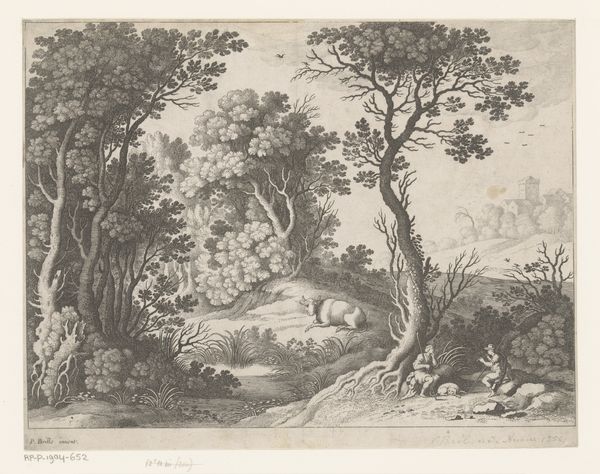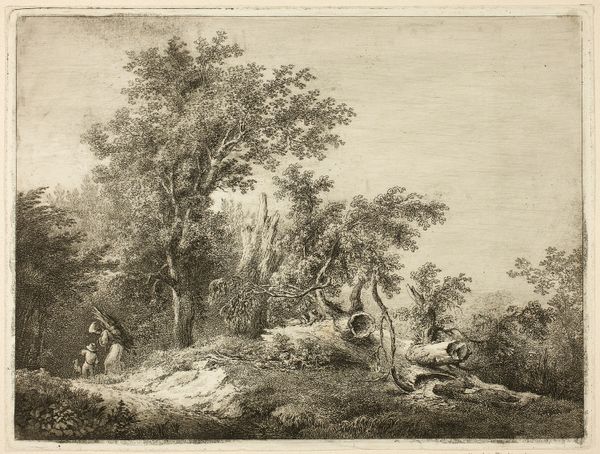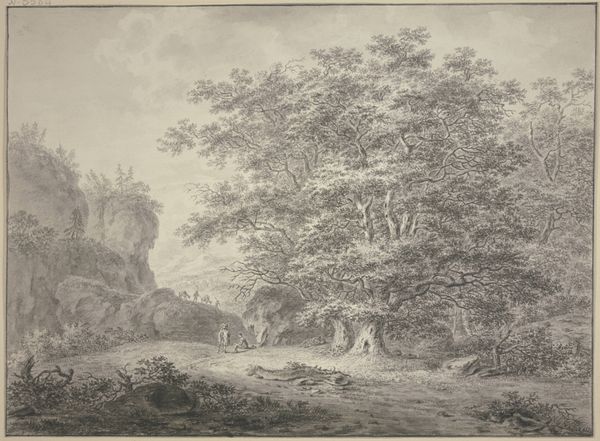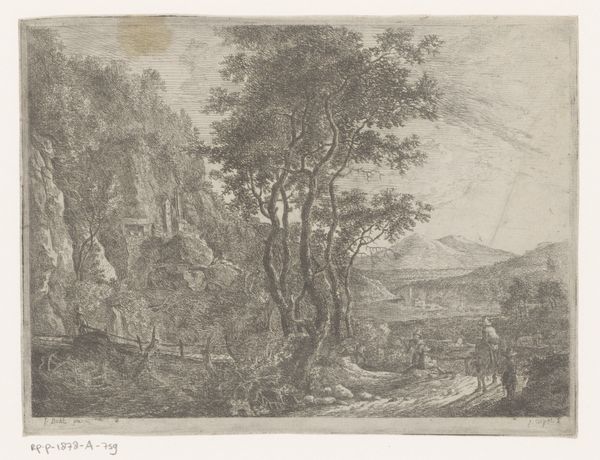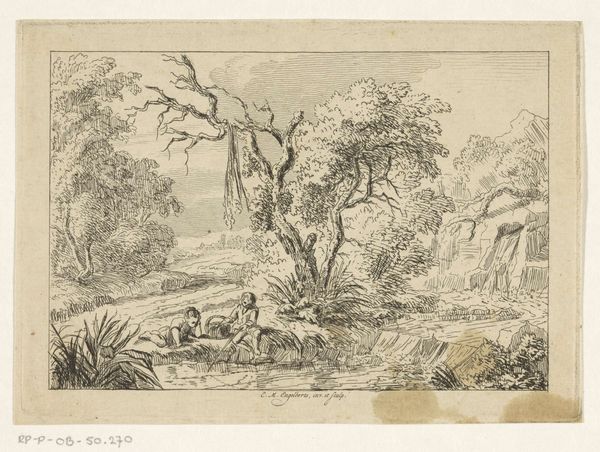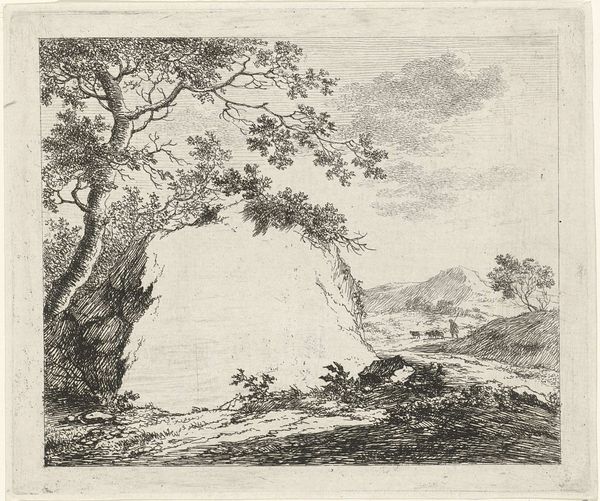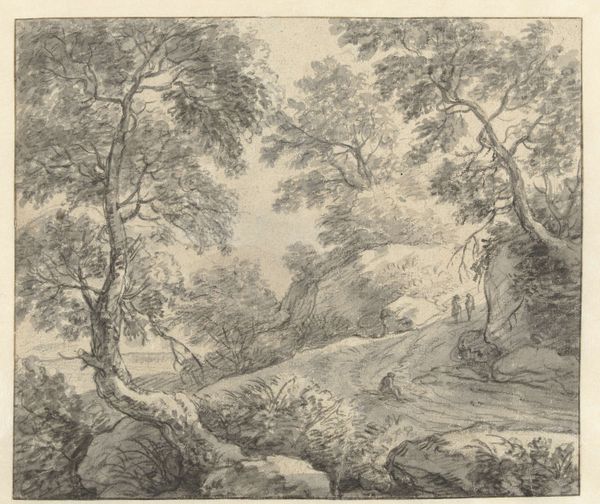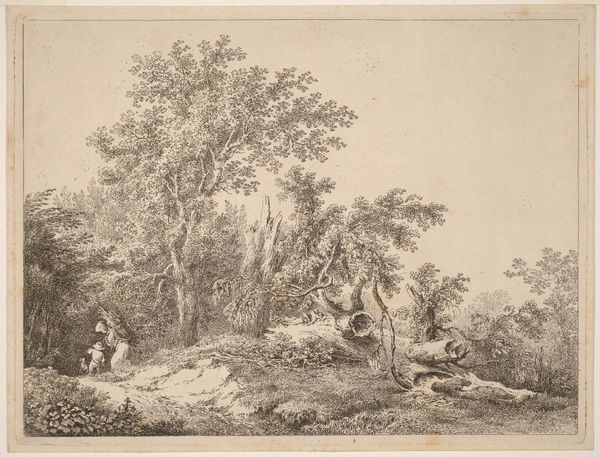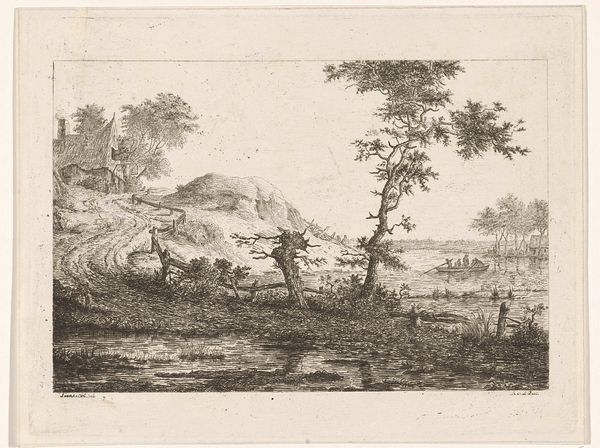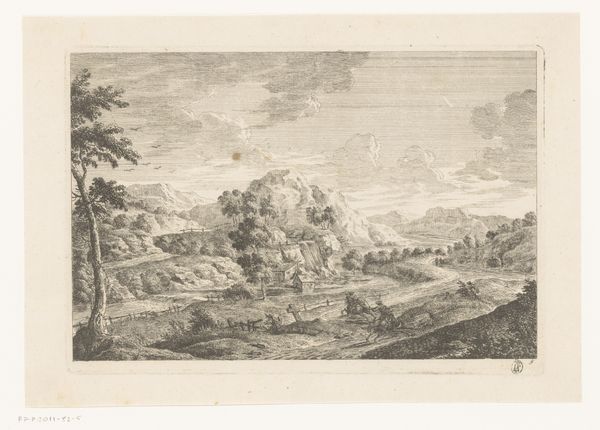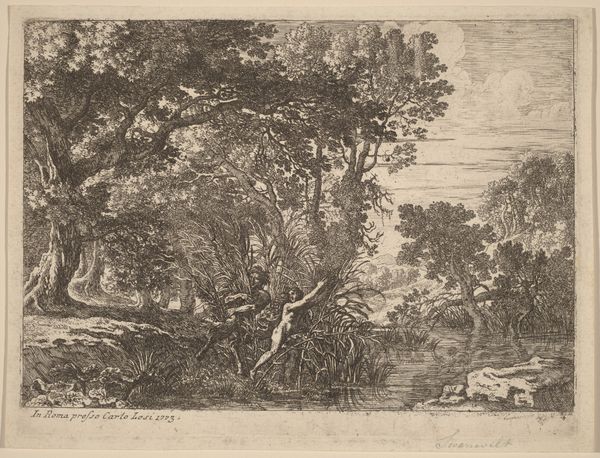
drawing, pencil
#
drawing
#
landscape
#
pencil
#
academic-art
#
realism
Dimensions: height 191 mm, width 237 mm
Copyright: Rijks Museum: Open Domain
Editor: Here we have "Ezeldrijver in berglandschap," or "Donkey Driver in Mountain Landscape," created between 1809 and 1839 by Jacobus Adrianus Weiland. It's a pencil drawing that presents a very serene, almost idealized view of nature. What strikes me is how the figure of the donkey driver seems almost secondary to the landscape itself. How do you interpret this work? Curator: That's an astute observation. The placement and size of the donkey driver in relation to the vastness of the landscape reflects the rising popularity of Romanticism during that time. Think about the societal shifts, the growth of cities, and the industrial revolution starting to pick up steam. Art increasingly served as an escape, idealizing nature as pure and untouched in contrast to urban life. Consider too how readily available landscape images became through printmaking, and the development of middle class tourism. Editor: So, the drawing could be speaking to a longing for simpler times? Curator: Exactly. The art market was shifting as well, from being primarily for aristocratic patrons, to a broader middle-class audience that collected prints. So you'd have both a change in subject, celebrating the natural world over courtly portraiture, as well as greater affordability through these reproduced images. It gives us a glimpse into the social and cultural anxieties of the era, don’t you think? How the natural world played a significant role for solace for viewers who desired to imagine leaving behind societal constraints. Editor: It’s interesting to consider the market shaping not just who consumes art, but also what subjects artists choose. I had not considered this aspect! Curator: Indeed. Weiland’s piece is more than just a pretty picture. It reflects broader social desires that shaped the art world in the early 19th century.
Comments
No comments
Be the first to comment and join the conversation on the ultimate creative platform.
